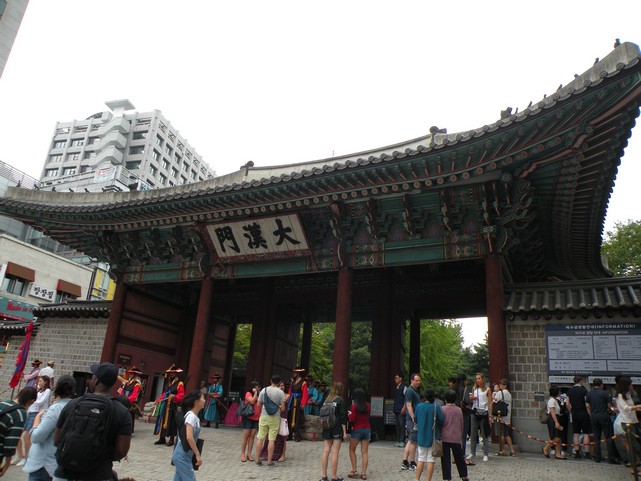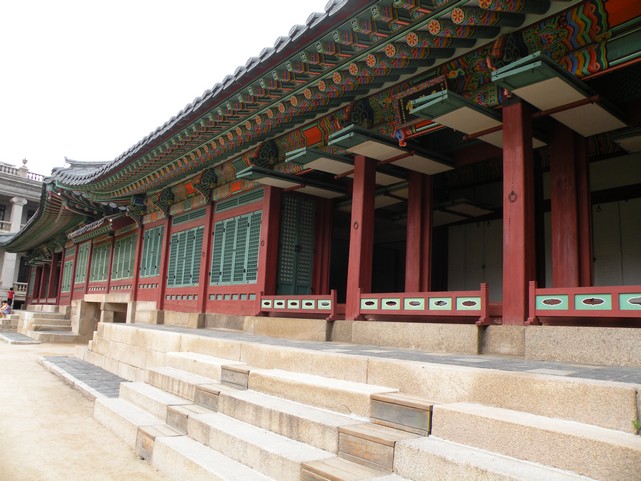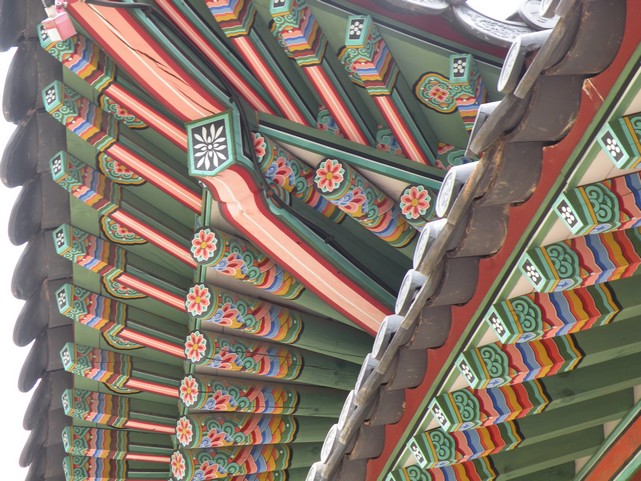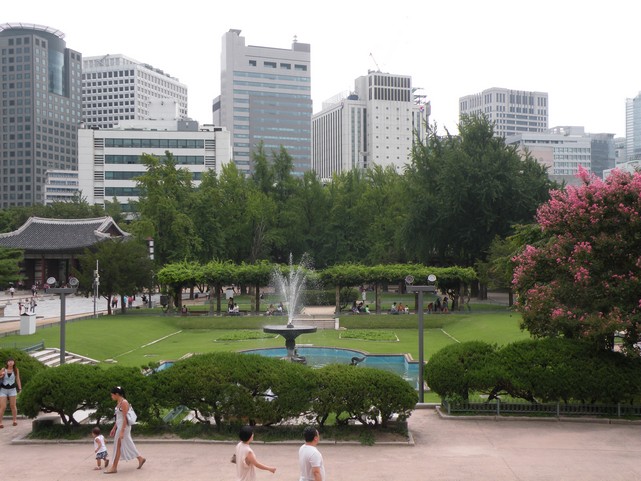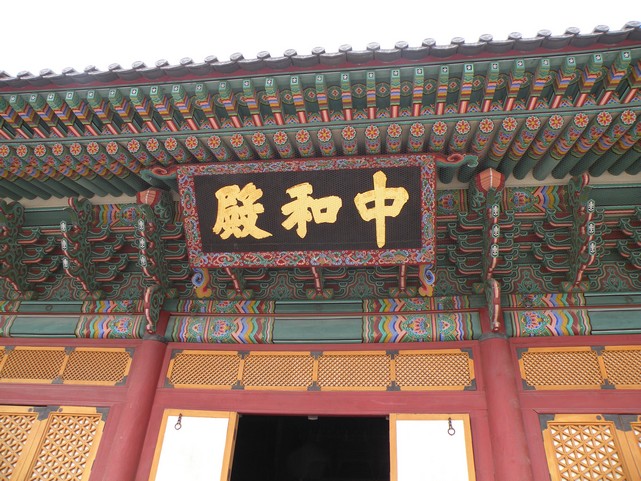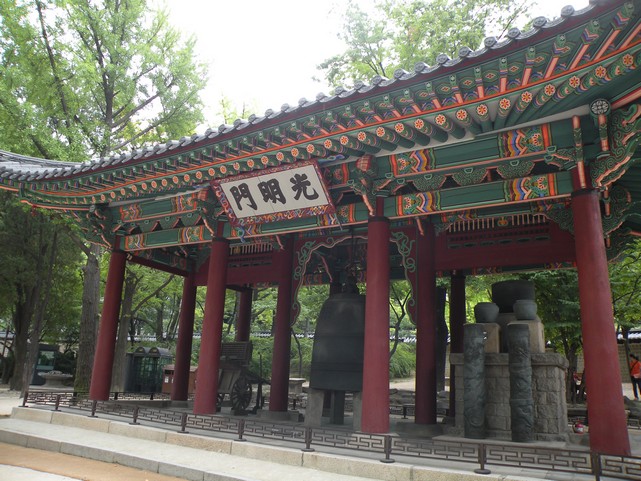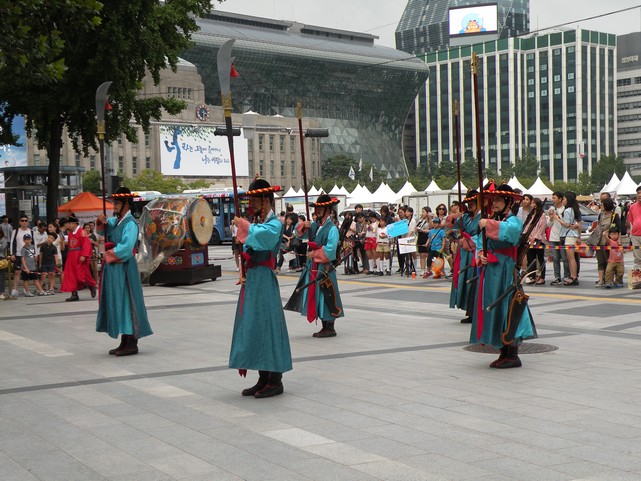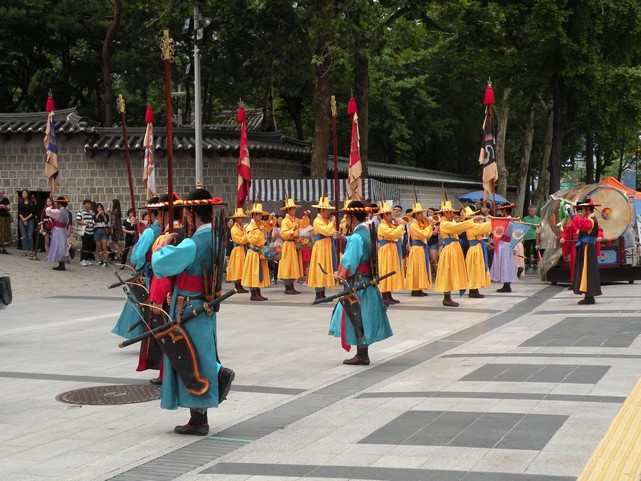How is it to visit an animal café in Asia? Are the animals well treated, what kind of animal cafés exist, and how does a visit work? I took a look and tested different cafés in South Korea and Japan.
💡 What is an animal café?
| Animal cafés are especially famous and popular in Asia. It is basically what the name already tells: a café where you can enjoy some drinks as well as play and interact with different animals. The first café was with cats and was created in Taiwan in the late 1990s. Nowadays exist all kinds of animal cafés with dogs, racoons, hedgehogs, sheep, rabbits, birds, and reptiles. Animal cafés are booming in Asia and already grew far behind the usual pet variation. [Note: Usually, I do not put any opinion in the info box but this time I feel I have to make an exception: I want to underline that in my opinion wild animals shouldn’t be part of human amusement and being used as ‘pets’ in cafés.] The idea behind the animal cafés is to give people the chance to spend some time with animals without actually having pets at home. Especially in bigger (Asian) cities, flats are often small and the living expenses are rather high. Plus Animal cafés basically only reveal the good sides of having a pet – spending time with it when you are in the mood, cuddling and playing with them, without actually being in charge. |
Animal cafés are rather famous in Asia even though I know that the first cat and dog cafés did also open up in my home country Germany. I liked the idea of spending time with animals which is why I decided to visit some of the cafés in South Korea and Japan.
My visits were a few years ago and I think some things changed since then – me as well. This is also why it was important to me to write a conclusion at the end of the post and to reflect on the visits in the cafés.

8,000 residents per square kilometre
I can understand that animal cafés are especially famous in the capitals since both cities Tokyo and Seoul are on the top ten list of the biggest metropolitan areas in the world. Tokyo is with almost 40 million residents even the sole lead, Seoul is the 6th place with around 22 million. Eight countries on the top ten list are in Asia. The living expenses are quite high, the housing market overflowed, and therefore the flats are getting smaller. In Tokyo are living approx. 4,700 people per square kilometre. In Seoul, it is even more than 8,000. Either way, in most cases there is no space for nor money for extra pets.
Before entering the café…
Some cafés have an entrance fee, sometimes with a drink included or if the entrance is free the cost of the drinks is usually higher. Sometimes they also have some donation boxes where you could leave some small change for the food or the general costs of the animals.
In every café I visited, I got a quick introduction on how to treat the animals and the most important house rules. I always had to use disinfectant first to make sure my hands are clean before touching and cuddling with the animals (and this was before Corona). Some cafés had even certificates on their walls which showed a photo of every animal along with its name, and proof of vaccination.

Cat Café
I visited two different kinds of cat cafés. The first one looked more like an actual café with normal chairs, and tables but of course also cat toys.
The second one was a really bright room with two floors as a duplex. They were connected with each other by a few ladders. All furniture, as well as the duplex itself and the ladders, were made out of wood. The room was inviting with low tables to sit on the ground. Therefore the basic lay-out could be also used by the cats. But of course, they also had their own equipment and furniture for climbing, playing, or sleeping.
I do not remember the exact amount of cats in the cafés but I would guess both times probably around eight. The atmosphere was rather calm and cosy. Both cafés had another wooden way for the cats above the heads of the guests which was not reachable by them. I think this is important for the animals because it gives them the chance to withdraw themselves.
In both cafés, the cats were allowed to move freely in the room. Some were curious and came to us and even sit on our lap to cuddle a bit. We enjoyed our time petting the animals and took really nice memories from the cafés.

Dog Café
Next, we visited a Puppy Café. We were first a bit confused by the name and actually really relieved to learn that the dogs were actually not really puppies but just smaller to medium-sized dogs. Because in the beginning, we were a bit afraid that it could be a café which gets new puppies every year and gets rid of them when they get too old (but as I said it is not). The system was a bit different from the cat café, here we had to pay an entrance fee, therefore, the drinks were cheaper in general.
The café did not really look like a café but more like an open, bright studio with only a few tables and a lot of free space. In the right corner were two flights of stairs, some carpets and small dog houses. The kitchen was somewhere in the corner left and not really open to the area which makes sense because of the animals. The feeling was more about getting comfy we got some slippers during our stay in the animal café.
The dogs were really open and curious. Most of them came to us when we entered the café to sniff and check us out. When we were sitting down we actually had to pay some attention to our drinks (they were in closed containers) because it did not take long until the first dog was sitting on top of our table. The atmosphere in the dog café was way more exciting and loud contrary to the cat café. We switched our seats to the stairs where the first dogs were sitting on our laps to cuddle and play with us. Other dogs were even more active and one tried to nibble my camera (as you can see in the video).
❗️ my conclusions
| Like I wrote in my introduction, I like the idea of the concept of the animal cafés but obviously, the well-being of the animals should be the top priority. I have to admit that I never had any pets since my sister was super allergic to all kinds of animal hair when we were kids. Therefore I am really not an expert depending on the keeping of animals. I think the types of animal cafés went way too far. Wild animals should not be part of human amusement either in cafés or somewhere else. With pets like cats and dogs, I feel a bit differently. I think the most important is obviously that the animals are held in a good as well as accurate health way and that the café is animal friendly. This means the animals have always water and have their toys and rooms or extra places to which they can escape when they feel uncomfortable, stressed, or just sleepy. The owners have to pay attention that the animals are well treated by the guests. I think it is also important that the animals can move freely and are not forced to interact with the customers. I love the idea of adopting animals from animal shelters or just from the street and giving them a new home and some love from animal friends. I can actually say that in all cases the owners actually seemed very caring for the animals. |
You have read the blog post Cuddling cats and dogs in Asian cafés on My Travel Journal-Blog.





















 I did the free trips with
I did the free trips with 













 We were in the Namsangol Hanok Village. The entry is free. This village shows again the combination out of traditional and modern life in Korea, around the beautiful houses are skyscraper. I was really surprised, how small the rooms and houses were. At the entrance gates are everywhere warnings that you should pay attention because the gates are so low. Even for me, it was a problem (and I really don’t know many people who are smaller than me). The architecture is totally incredible and beautiful. You will feel like you travelled back in time. The location is so nice that also many fresh married couples come to the Villages to take their wedding pictures.
We were in the Namsangol Hanok Village. The entry is free. This village shows again the combination out of traditional and modern life in Korea, around the beautiful houses are skyscraper. I was really surprised, how small the rooms and houses were. At the entrance gates are everywhere warnings that you should pay attention because the gates are so low. Even for me, it was a problem (and I really don’t know many people who are smaller than me). The architecture is totally incredible and beautiful. You will feel like you travelled back in time. The location is so nice that also many fresh married couples come to the Villages to take their wedding pictures.




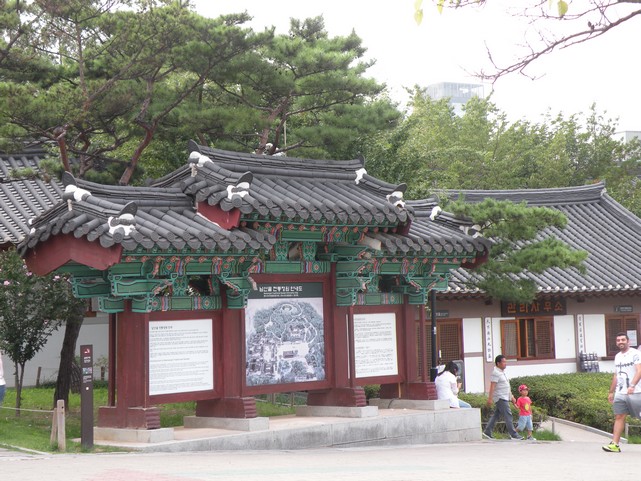

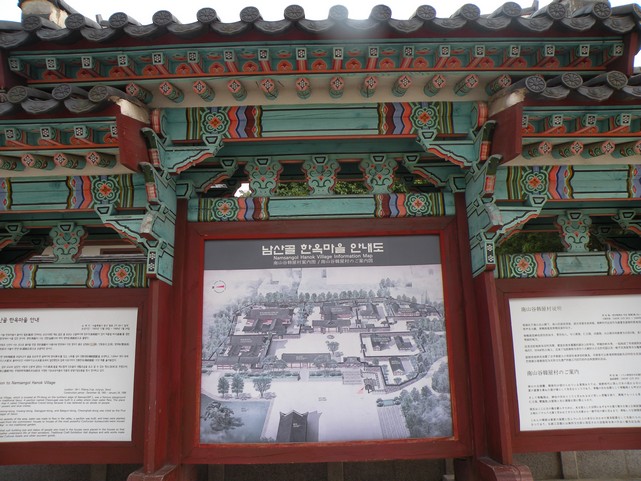





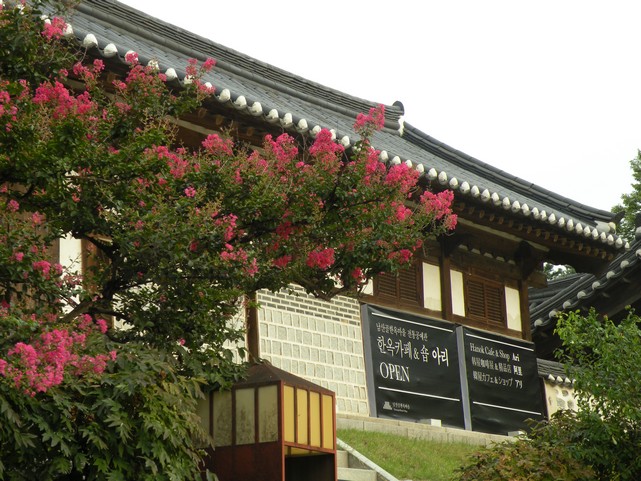

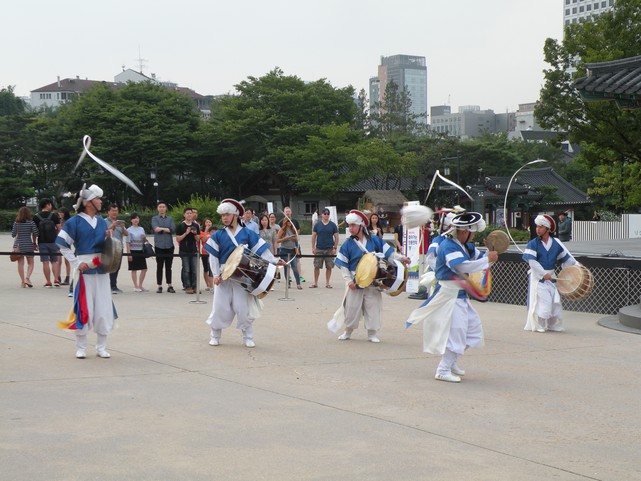



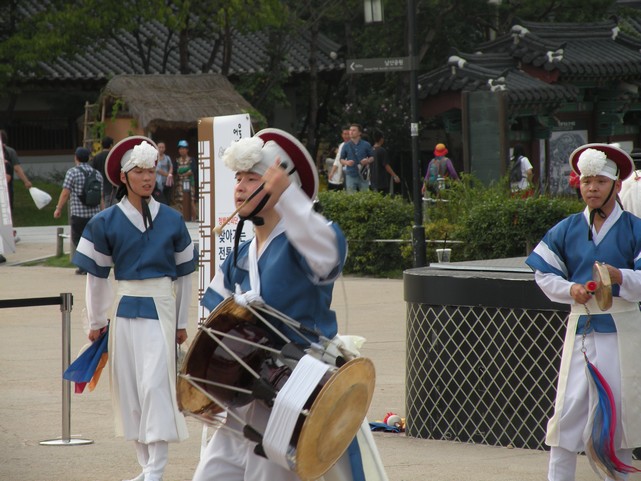

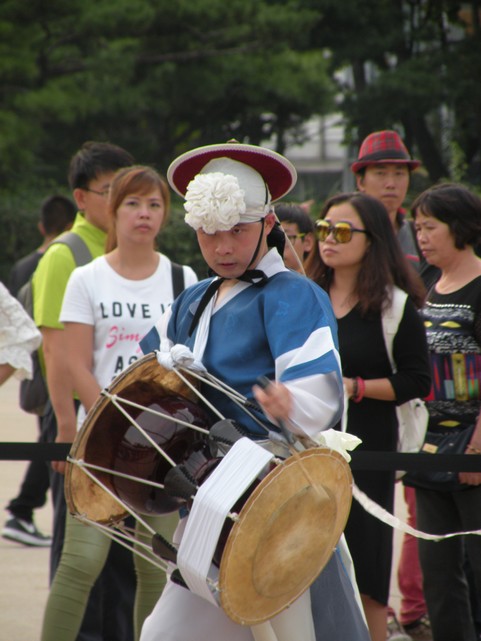

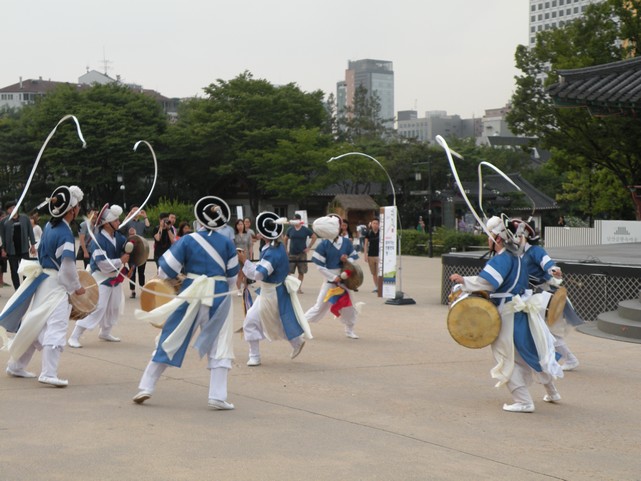









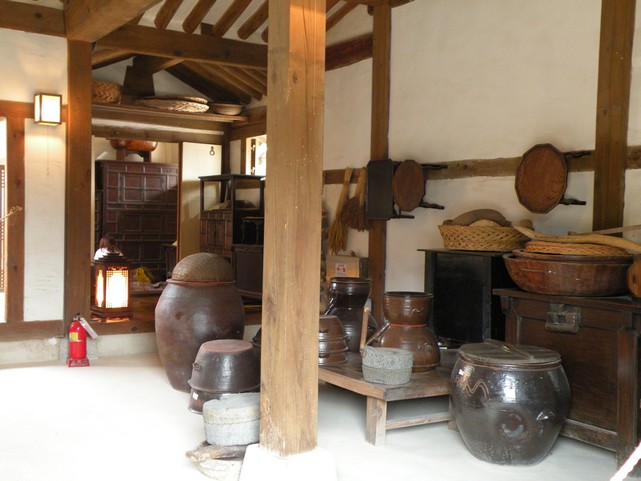





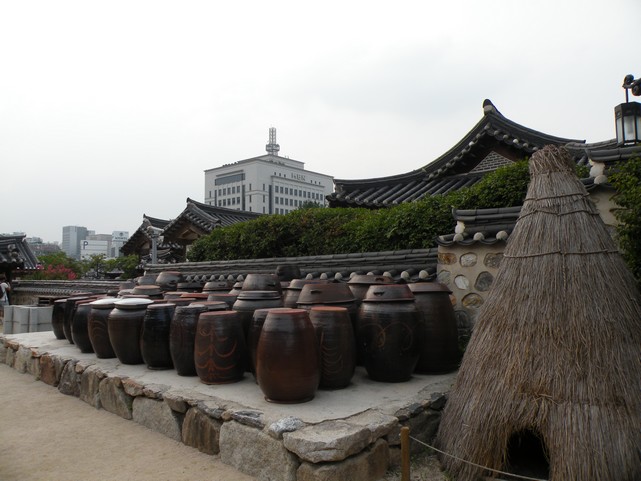















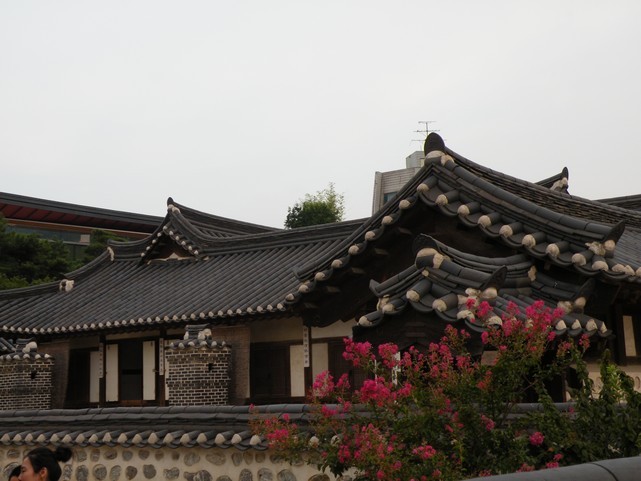

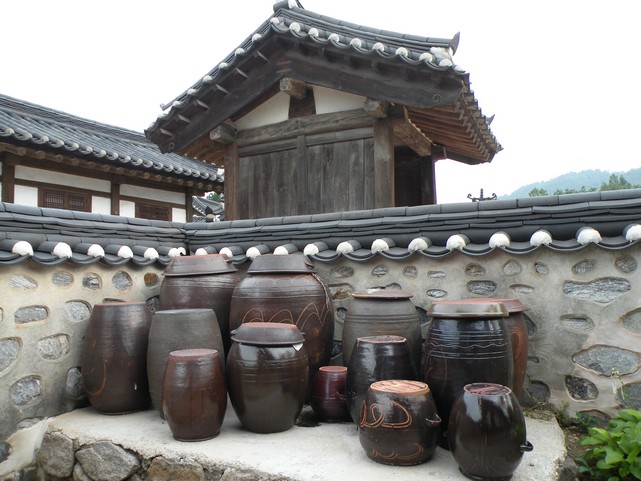

















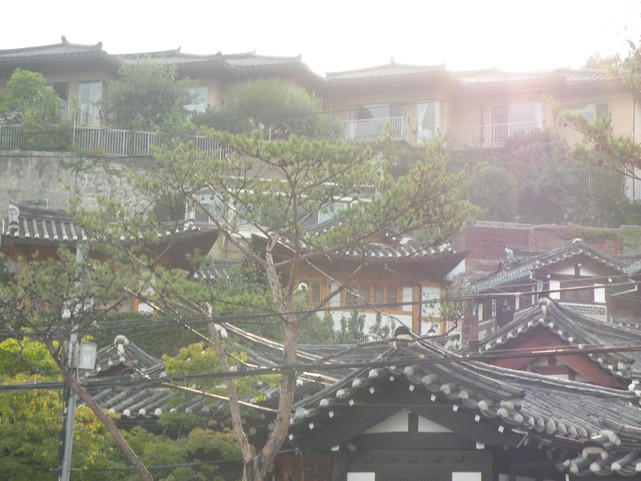



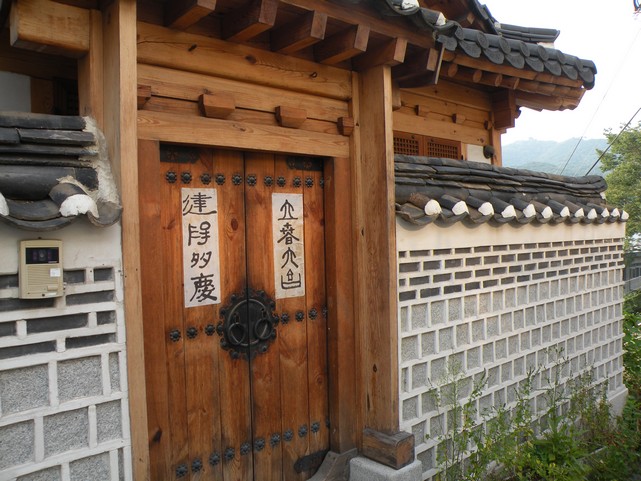

 One of the most important holidays in South Korea is Chuseok (
One of the most important holidays in South Korea is Chuseok (



